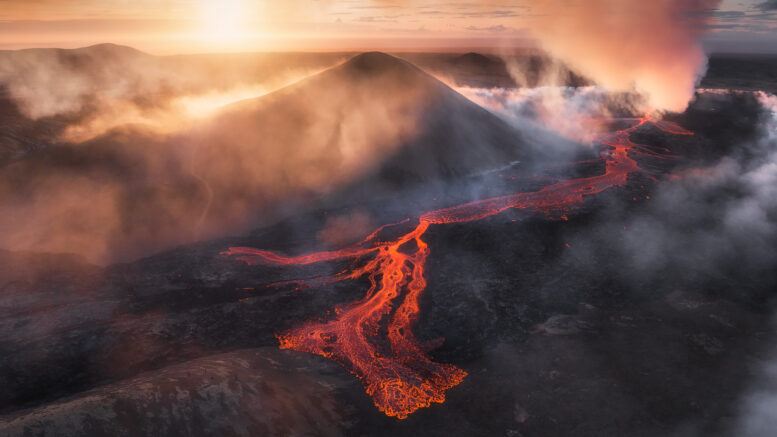Some countries are completely calm in response to an earthquake, such as Chile and Japan. Other countries see storms as another day in the park: the Philippines, India, and Thailand. Iceland is no different. Its location on the Mid-Atlantic Ridge has made the country completely accustomed to volcanic and seismic activity. It is no stranger to severe eruptions: the Eyjafjallajokull Volcano eruption of 2010 and the Skaftareldar of 1783–1784. Closer to the end of 2023, Iceland has experienced another series of eruptions that have raised concerns worldwide and even prompted evacuations of local tourist attractions and residential areas.
Iceland is located on the Mid-Atlantic Ridge, placing it on the confluence of the Eurasian and North American tectonic plates. There are a large number of active and dormant volcanoes in Iceland. Still, the most active ones go from northeastern Iceland to southwestern areas, encompassing peaks such as Krafla, Askja, Laki-Fogrufjoll, Grimsvotn, and Vatnajokull. This highly active location gives Iceland a strong production source of geothermal energy, where 66% of that measurement of 85% of the renewable energy produced in Iceland comes from geothermal sources. Alongside the energy production sector of the Icelandic economy, the seismic activity of the island has opened up tourist attractions such as the Blue Lagoon, a geothermal spa in southwestern Iceland near Grindavík.
This advantage also brings a sense of danger and a need for awareness in the surrounding area. In the latter half of 2023, the Fagradalsfjall Volcano Field erupted again around Litli-Hrutur Hill, releasing lava flows into the surrounding area approaching the town of Grindavík. In response to this threat, the residents of Grindavik were ordered to evacuate with quick intermissions in November of 2023. However, the majority of operations and functions have been able to continue as normal with minimal risk. Air travel to and from the country has not seen major disruptions despite previous eruptions on the Reykjanes peninsula.
Iceland is a land of beauty and fascination but also a slight danger from nature. As seen from other events, seismic and volcanic activity are common and part of an Icelander’s understanding. Agencies such as the Icelandic Meteorological Office and Iceland’s Department of Civil Protection are monitoring the activity of the volcanoes involved, and these recent eruptions have not caused major disruptions to the local populations or the world population.
Eruptions are not an uncommon occurrence on the island. Throughout history, the country has experienced eruptions with varying degrees of severity, such as the Eyjafjallajokull eruption of 2010, which disrupted air travel in and around Europe. In the face of these eruptions, there has been little risk to life, and there are indications that times may return to normal for the Reykjanes peninsula and the surrounding areas of Fagradalsfjall.


Be the first to comment on "The Land of Ice and Fire Erupts"